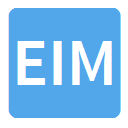Locus Technologies Brings Google Maps to the Environment
SAN FRANCISCO, Calif., 28 November 2005 — Locus Technologies (Locus), the leader in environmental information management, today announced that it has expanded its award winning, web-based Environmental Information Management™ (EIM™) system to work with the popular Google™ Maps. Locus embedded Google Maps API to its popular EIM application for manage analytical data on the Internet. A user can now add overlays of environmental information to the map and display shadowed “info windows,” just like Google Maps. The result is a Google Map Mashup, a web application that seamlessly combines content from more than one source into an integrated experience.
With the same ease of finding an address location or driving directions, users can now find subsurface environmental information at their sites, such as chemical concentrations in groundwater. Users can zoom and pan the maps and photos for a seamless view of the geography around sites. Using this Mashup, EIM provides a data box listing the chemical concentration in groundwater, borehole information, and other relevant environmental information associated with location. With Google Maps in EIM, users have the power of a Geographical Information System in a light-weight web browser application.
The EIM interface to Google Maps significantly improves productivity in managing spatial environmental information by developing and delivering the next generation of Internet mapping application services to the environmental industry. The result is the almost instant transformation of previously inaccessible raw environmental data into meaningful, actionable, and productive visual information.
“Drawing upon input from hundreds of our clients who currently use EIM’s SVG-based GIS application, Google Maps provides EIM users with additional convenience, efficiency, and a distinct competitive advantage. The product is ideally suited for large or small sites that require a GIS application, but don’t have resources to build one using an expensive traditional GIS tool. Furthermore, all of this exciting new functionality comes without the need to store large image files on the server end, thus minimizing the number of trips between browser and server, minimizing storage and Internet traffic requirements,” said Dr. Neno Duplancic, President and CEO of Locus.
This application is offered as a value-added service to existing users of Locus’ eGIS-SVG module.



